10 bizarre deep sea creatures found in 2022
Lots of bizarre deep sea creatures were spotted in 2022. Here are some of our favorites.
If you want to see an alien creature then stop searching the cosmos and take a trip to the bottom of the sea.
The ocean's depths are full of weird and wonderful creatures, and as humans venture deeper into the abyss more and more of them are being spotted. In 2022, scientists spotted an entire aquarium's worth of deep sea beauties. From blue goo and gummy squirrels to a spaghetti worm and Jell-O fish, here are our favorites.
Luminous lump of spaghetti
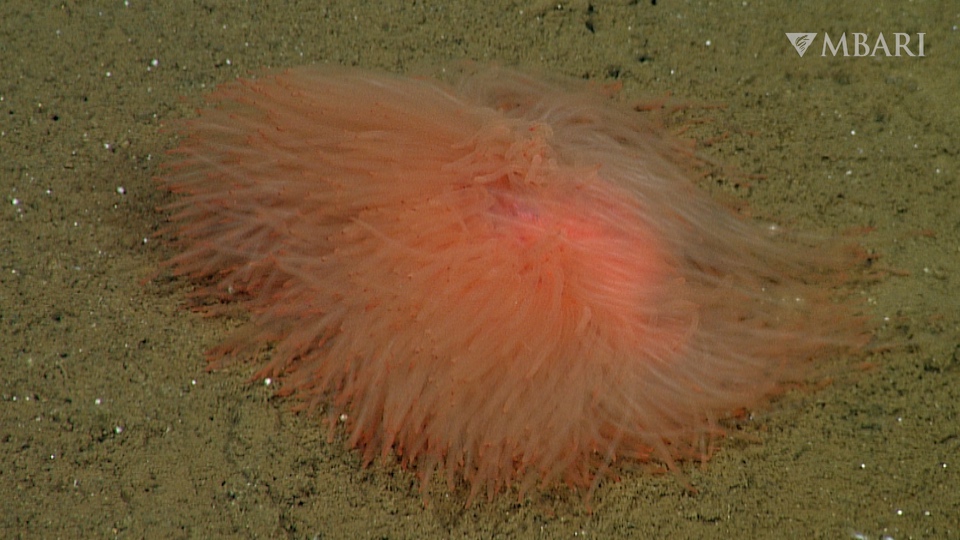
A bizarre seafloor creature covered with luminous orange, spaghetti-like tentacles caused a stir online.
Researchers from the Monterey Bay Aquarium Research Institute (MBARI) first spotted the spaghetti worm, from the genus Biremis, using a remotely operated vehicle (ROV) in 2012 while they were exploring the Gulf of California off the coast of Mexico.
The pasta-mimicking worm has no eyes or gills and uses its colorful tentacles to catch the tiny pieces of organic detritus, also known as marine snow, that falls to the seafloor.
Most spaghetti worms live in burrows or tunnels below the seafloor and only poke their noodle-like tentacles into the water to snatch up bits of food. But this Biremis worm spends its life above the ocean bottom and has previously been observed swimming through the water or crawling along the seafloor to find locations where food is plentiful.
Read more: Weird deep-sea worm looks like a luminous lump of spaghetti
Sign up for the Live Science daily newsletter now
Get the world’s most fascinating discoveries delivered straight to your inbox.
Squid mom carries pearl-like eggs
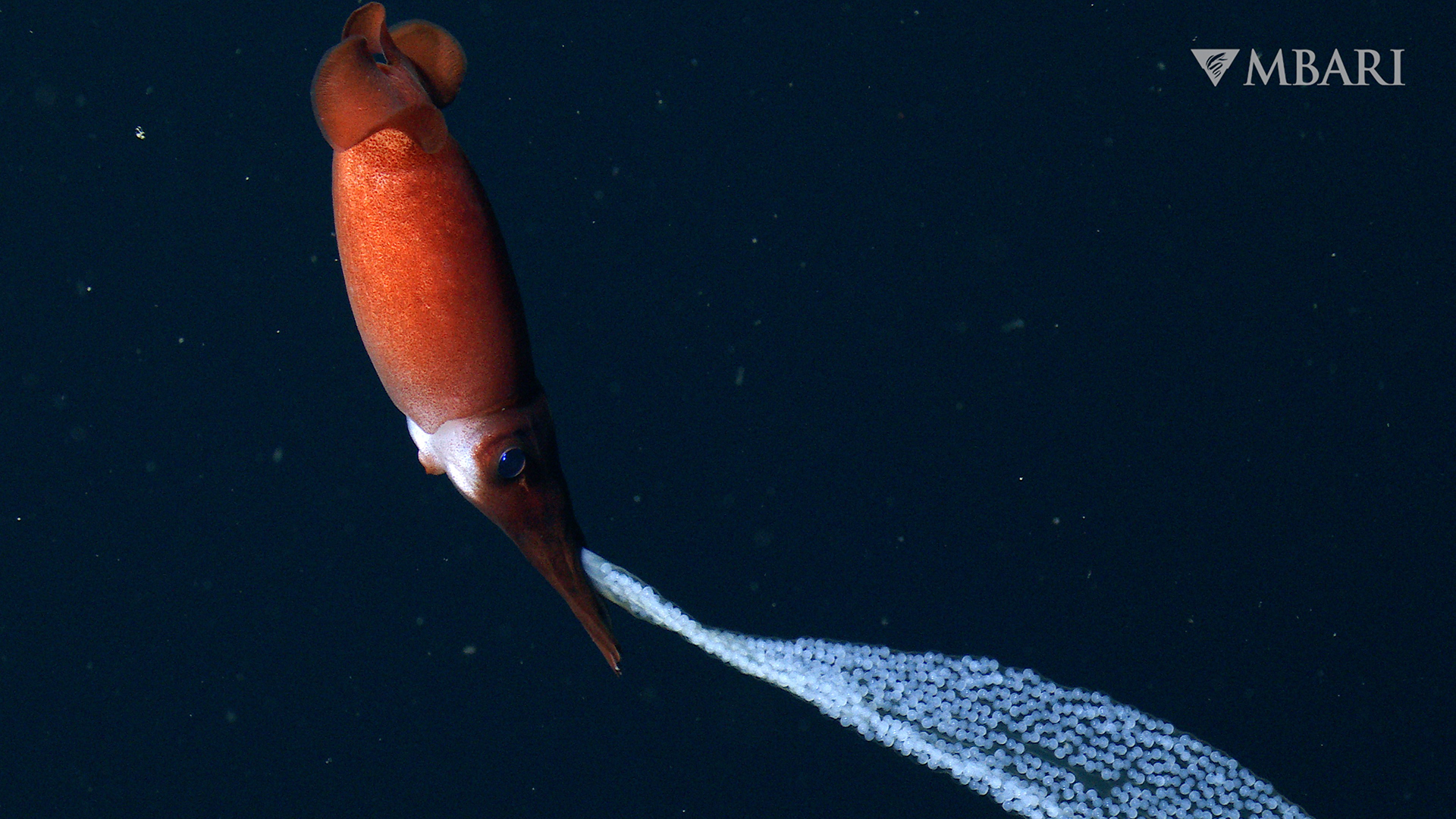
Extremely rare footage of a squid mom carrying a gelatinous string of glimmering pearl-like eggs in her arms was captured in the dark ocean depths off the California coast.
MBARI researchers spotted the deep-sea squid (an unknown species in the genus Bathyteuthis) with an ROV around 56 miles (90 kilometers) off the coast at a depth of 4,560 feet (1,390 meters).
Squid moms don't usually brood, or carry their eggs. Most females will release their eggs on the seafloor or in large gelatinous clumps. Brooding may increase the eggs' chance of hatching, but it likely also increases the risk of predation for the mother, which is why it is so rare.
The overprotective mum may look large in the image compared to her eggs but, in reality, her mantle — the main part of a squid's body containing all the major organs — can only grow to a maximum length of 3 inches (7.5 centimeters).
Read more: Deep-sea squid mom carries dazzling pearl-like string of eggs
Gummy squrrel
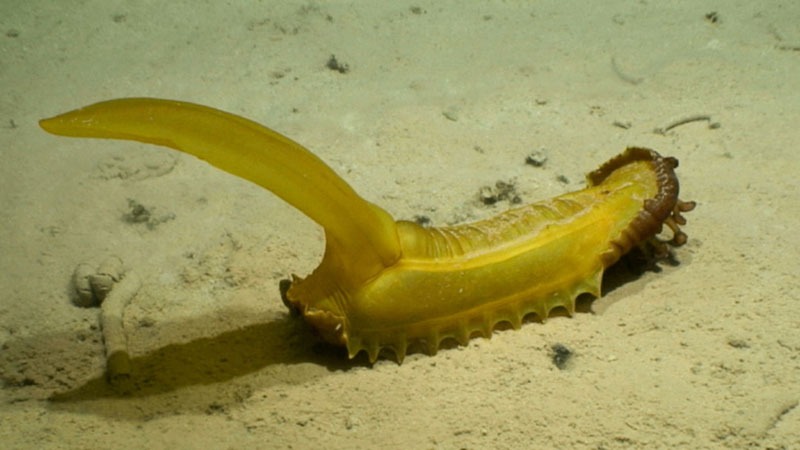
A bizarre gelatinous creature that resembles a half-peeled banana was spotted by researchers in the Pacific Ocean. The creature, known as a gummy squirrel (Psychropotes longicauda), is actually a sea cucumber and was around 2 feet (60 cm) long.
The gummy squirrel was one of 55 specimens collected by scientists from the Natural History Museum in London after exploring the seafloor of the Pacific Clarion-Clipperton Zone located between Hawaii and Mexico.
Other notable creatures from the trip include a tulip-shaped sea sponge and a coral thought to be exclusive to the Atlantic ocean. As many as 39 of the creatures collected could belong to never-before-seen species.
Read more: 'Gummy squirrel' found in deep-sea abyss looks like a stretchy half-peeled banana
Mysterious blue goo
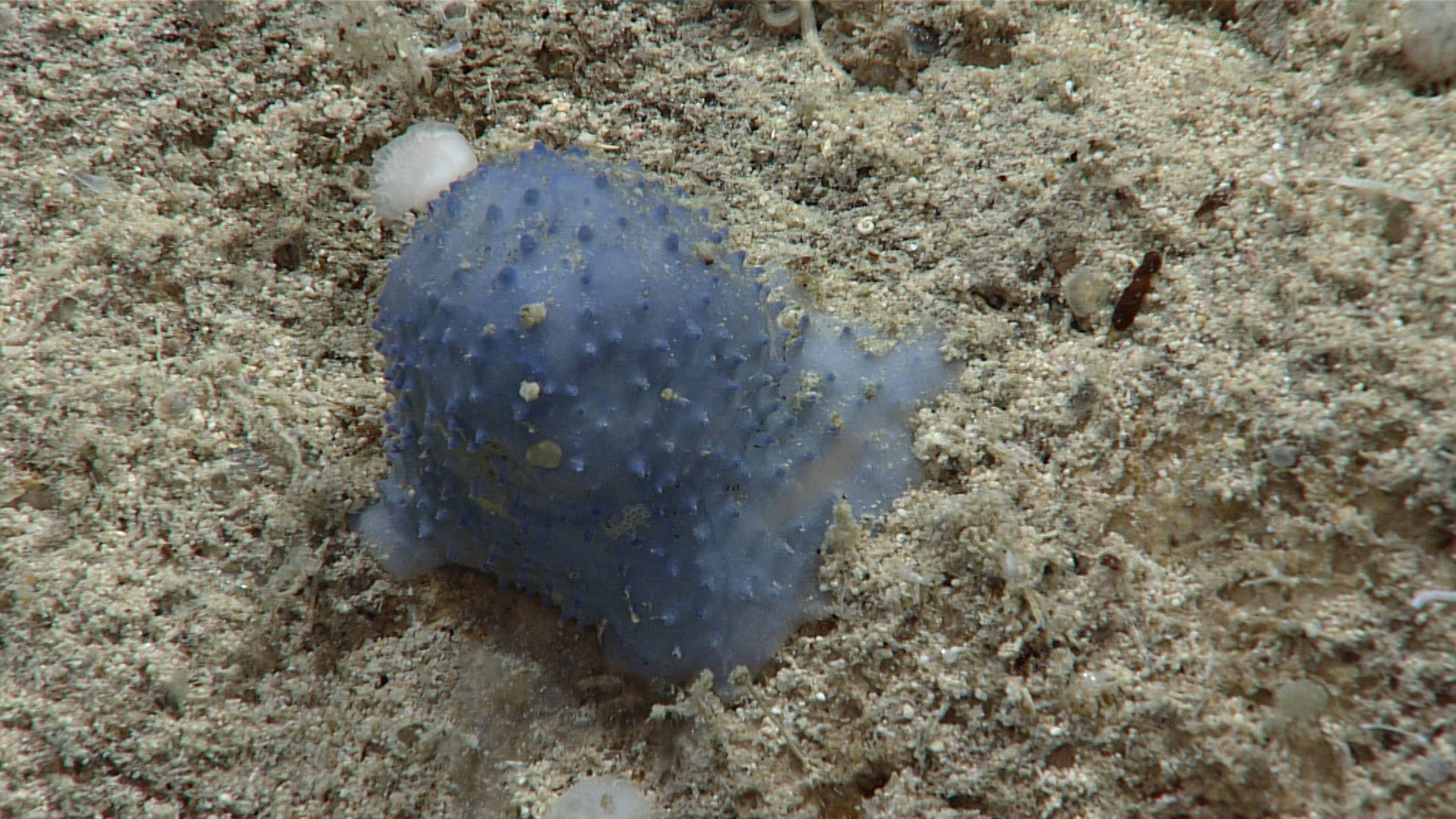
Scientists were left scratching their heads after they found mysterious gooey creatures on the seafloor surrounding St. Croix, one of the U.S. Virgin Islands.
Researchers from the National Oceanic and Atmospheric Administration (NOAA) spotted multiple "blue goo" creatures using an ROV and live-streamed the dive online. The mysterious blobs were sitting motionless on the ocean bottom between 1,335 and 2,005 feet (407 and 611 m) beneath the water's surface.
During the live stream, researchers guessed what it could be. Suggestions included soft corals and sea sponges, but there was no unanimous answer. "I can tell you it's not a rock, but that's as far as I can go," one researcher joked.
Read more: Mysterious 'blue goo' at the bottom of the sea stumps scientists
Weird-eyed strawberry squid
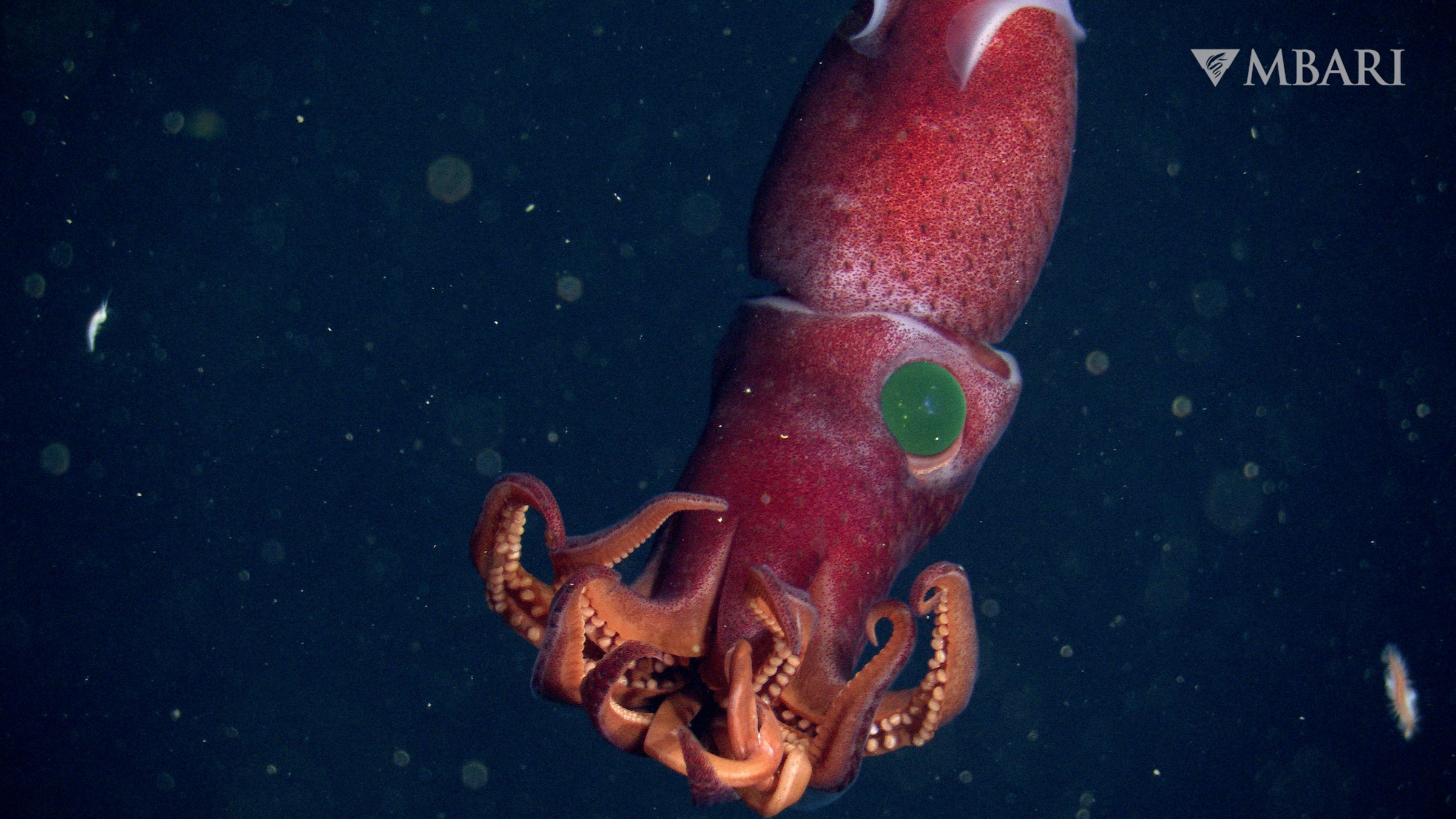
| Row 0 - Cell 0 | Row 0 - Cell 1 | Row 0 - Cell 2 |
| Row 1 - Cell 0 | Row 1 - Cell 1 | Row 1 - Cell 2 |
| Row 2 - Cell 0 | Row 2 - Cell 1 | Row 2 - Cell 2 |
MBARI researchers caught a glimpse of a bright red squid with peculiar peepers. The strawberry squid (Histioteuthis heteropsis) had one large bulbous yellow eye, while the other was small and black.
The team spotted the weird-eyed cephalopod using an ROV at a depth of 2,378 feet (725 m) in Monterey Canyon off the coast of California.
The squid's mismatched eyes give it an unusual advantage in the deep ocean: The large yellow eye looks upwards to spot shadows cast by animals above and the smaller black eye peers down, looking for flashes of bioluminescence given off by prey and potential predators.
Interestingly, H. heteropsis hatchlings are born with two identically-sized eyes. As they develop into juveniles, the left eye surges in size and the right stays the same size. By adulthood the left eye can be more than double the size of the right eye.
Read more: Weird-eyed strawberry squid spotted in 'twilight zone' off California's coast
Alien "shopping bag"
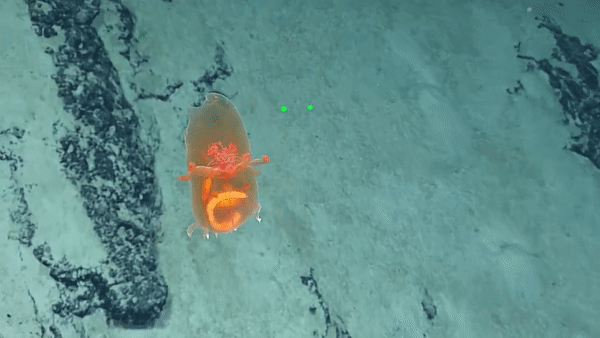
A bizarre deep-sea creature resembling a floating plastic bag with glowing Cheeto guts was spotted near Hawaii.
Researchers from Nautilus Live spotted the floating drifting creature with an ROV at a depth of 7,221 feet (2,201 m) in the Marine National Monument southeast of Honolulu. The bizarre animal is actually a sea cucumber in the family Elpidiidae that scavenges marine snow falling to the seafloor.
The transparent creature has a fin-like appendage that helps it swim short distances across the seafloor, as it was doing when researchers spotted it. The bright orange tubes inside the sea cucumber are its intestines, but it is unclear why they are so colorful.
Read more: Alien shopping-bag ocean weirdo has glowing Cheetos for guts
Translucent "Jell-O fish"
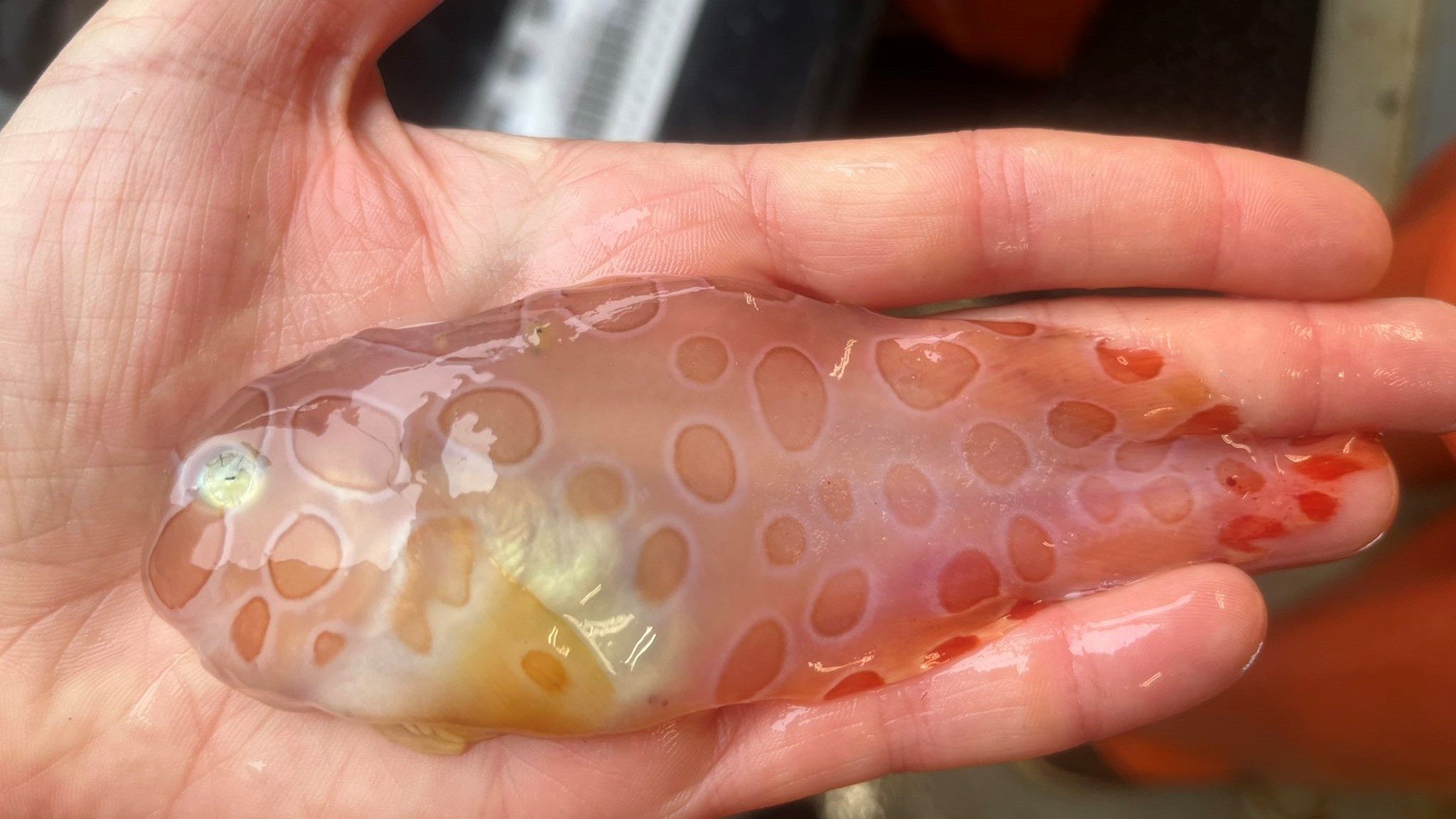
NOAA researchers were surprised after reeling in a bizarre-looking, jelly-like fish as they trawled the seafloor off the coast of the Aleutian Islands in Alaska.
The gelatinous fish, known as a blotched snailfish (Crystallichthys cyclospilus), had a translucent body covered in ringed spots and an unusual suction cup on its belly, which is actually a modified fin that allows it to cling to the seafloor.
Blotched snailfish can live in waters up to 2,723 feet (830 m) below the ocean surface. Their Jell-O-like consistency allows them to withstand the crushing pressure of the deep sea and their translucent bodies help to hide them from predators. However, large parts of their life history remain a mystery to scientists.
Read more: Bizarre translucent 'Jell-O fish' pulled up from icy depths in Alaska
Creepy "smiling" shark
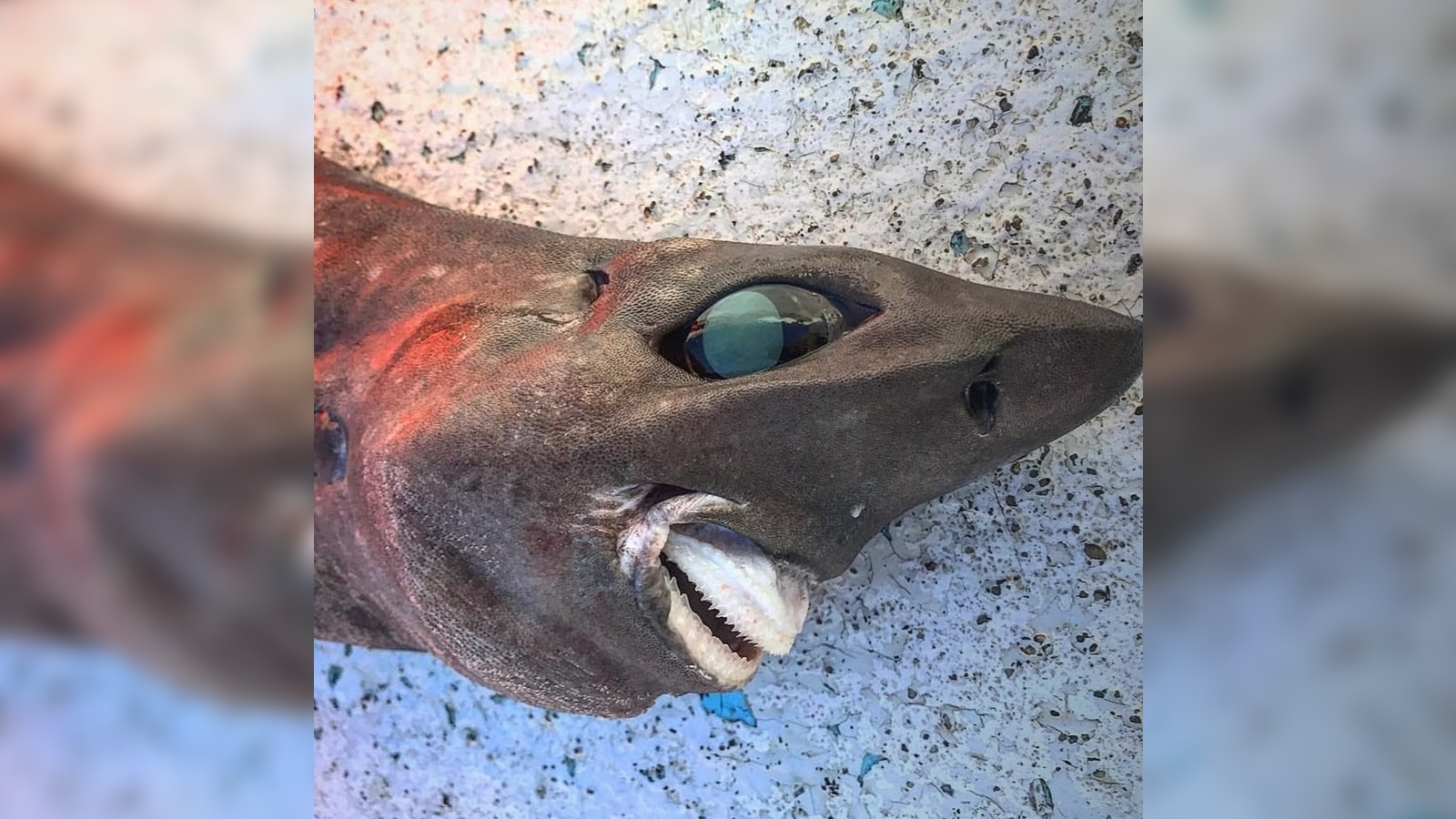
A fisher was shocked to reel in a mysterious deep-sea shark from the depths off the coast of Australia. The unusual specimen had bulging eyes, rough sandpaper-like skin, a large pointed snout and an unnerving, human-like smile.
Nobody knows exactly which species the creepy-looking creature might belong to, which added to the mystery surrounding the creature that was dragged up from around 2,130 feet (650 m) below the surface.
Guesses about what type of shark the smiling specimen was included cookiecutter shark, goblin shark, lantern shark, endeavor dogfish, kitefin shark and roughskin dogfish. But several shark experts told Live Science that the unnerving animal was most likely a gulper shark.
Read more: Mysterious 'nightmare' shark with unnerving human-like smile dragged up from the deep sea
Deepest-dwelling squid

A team of researchers hunting for the wreck of a lost WWII destroyer ship made another exciting discovery: Video evidence of the deepest-swimming squid ever recorded.
The team spotted the bigfin squid, from the family Magnapinnidae, just above the floor of the Philippine Trench to the east of the Phillipines at a staggering depth of around 20,300 feet (6,200 m) below the surface. The researchers also spotted four dumbo octopuses (Grimpoteuthis sp.) at a similar depth.
The deep dwelling cephalopod smashed the record from the previous champ, another bigfin squid spotted about 15,400 feet (4,700 m) below the Pacific Ocean.
The researchers had been searching for the wreck site of the USS Johnston — a U.S. Navy destroyer that sank in 1944 during the Battle of Leyte Gulf.
Read more: World's deepest-dwelling squid spotted 20,000 feet under the sea
Vanilla "Vader" woodlouse
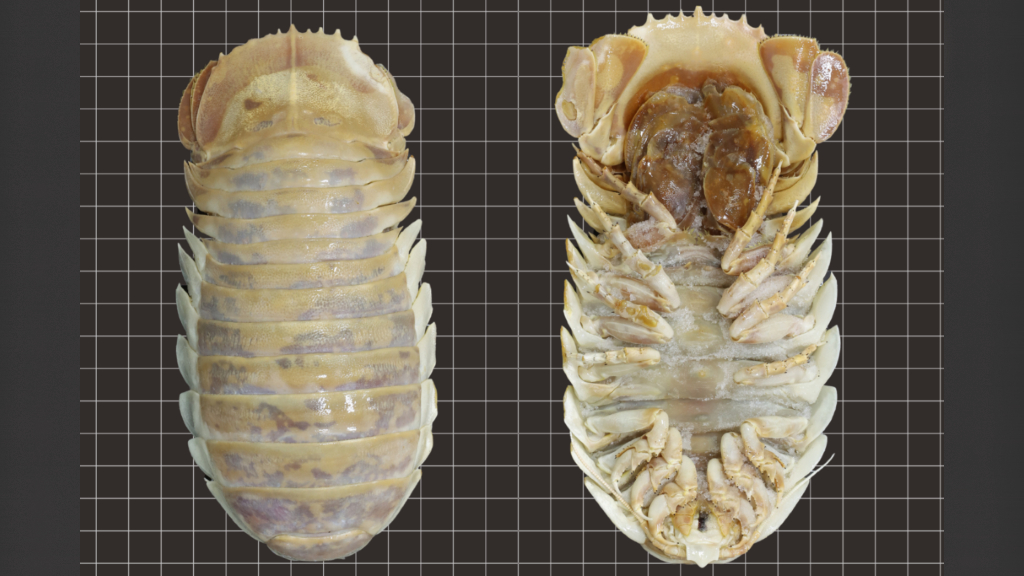
A colossal, creamy yellow woodlouse relative with a vague resemblance to Darth Vader was discovered deep below the ocean surface in the Gulf of Mexico.
The newfound species, Bathynomus yucatanensis, was caught in a baited cage trap set at about 2,000 feet to 2,600 feet (600 to 800 m) below sea level. Researchers initially thought it was a specimen of the closely related Bathynomus giganteus, but DNA analysis later revealed it was a never-before-seen species.
At more than 10 inches (26 cm) long, the creature is 2,500% larger than the closely related terrestrial woodlice, also known as a pill bug or roly poly.
Read more: Creepy deep-sea 'vanilla Vader' woodlouse is 25 times bigger than a land louse
Want to learn more about the deep sea? This year we also answered mysteries about why there are so many giants in the deep sea and what the deepest spots in Earth's oceans are.

Harry is a U.K.-based senior staff writer at Live Science. He studied marine biology at the University of Exeter before training to become a journalist. He covers a wide range of topics including space exploration, planetary science, space weather, climate change, animal behavior and paleontology. His recent work on the solar maximum won "best space submission" at the 2024 Aerospace Media Awards and was shortlisted in the "top scoop" category at the NCTJ Awards for Excellence in 2023. He also writes Live Science's weekly Earth from space series.









